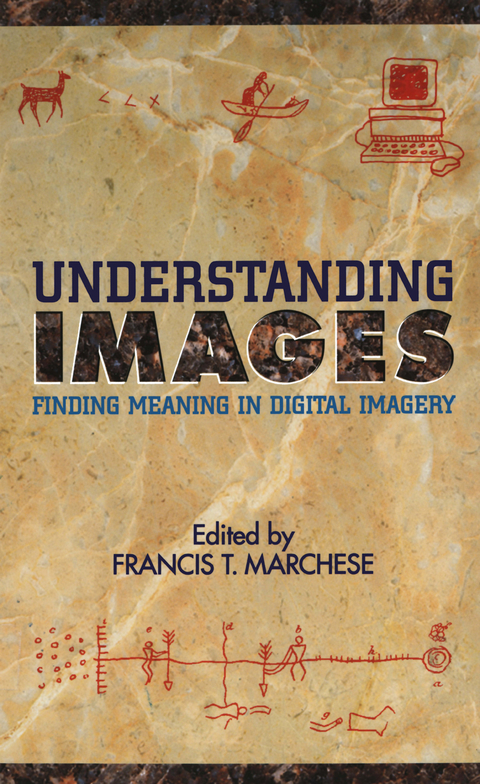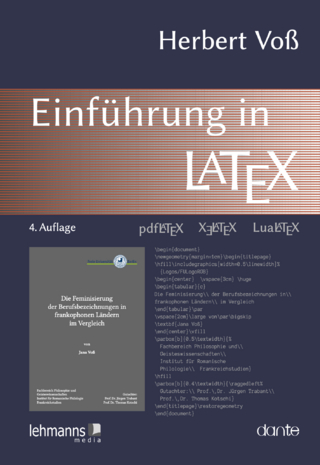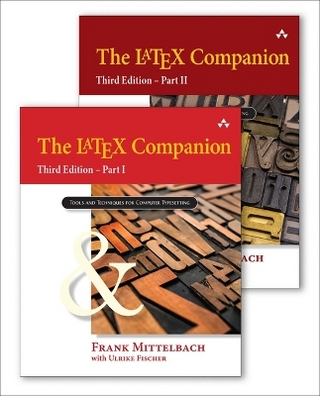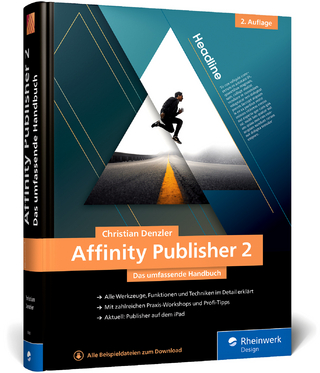
Understanding Images
Springer-Verlag New York Inc.
978-1-4613-8382-6 (ISBN)
Specifically, I would like to thank Jean Coppola (conference coordinator), the NYC ACM SIGGRAPH board of directors, Dr. Carol Wolf (Chair, Computer Science Depart- ment), Kenneth Norz (Assistant Dean), Dr. Susan Merritt ( Dean, School of Computer Science and Information Systems), and the di- rector and staff of Pace University's Downtown Theater. 1.1 REFERENCES [1] Barlow, H., Blackmore,C. , and Weston-Smith, M. (Eds.) (1990). Images and Understanding. Cambridge:Cambridge University Press.
1 Editor’s Introduction.- 1.1 References.- 2 Lipstick on the Bulldog.- 2.1 Introduction.- 2.2 A Few Definitions.- 2.3 Why Collaboration is Hard to Do.- 2.4 Process, Tools, Product.- 2.5 Strategists or Service Bureaus.- 2.6 Education.- 2.7 Common Ground.- 3 Photographic Interpretation.- 3.1 Introduction.- 3.2 Questions and Answers.- 4 Cognitive Origins of Graphic Productions.- 4.1 Introduction.- 4.2 Pictographs and Symbols.- 4.3 Pictorial Space and Pictorial Devices.- 4.4 Conclusions.- 4.5 Acknowledgements.- 4.6 References.- 5 Automating Procedures for Generating Chinese Characters.- 5.1 Introduction.- 5.2 The Case for Chinese Characters.- 5.3 Introduction to Chinese Characters.- 5.4 Current Software Capabilities.- 5.5 The Path Based Bezier Curve Approach.- 5.6 References.- 6 Multimedia Representational Aids in Urban Planning Support Systems.- 6.1 Introduction.- 6.2 Challenges to Urban Planning Support Systems.- 6.3 Addressing the Challenges: Representational Aids.- 6.4 Input Aids.- 6.5 Output Aids.- 6.6 Application of Representational Aids: Rantoul, Illinois.- 6.7 Conclusions.- 6.8 Acknowledgements.- 6.9 References.- 7 Gesture Translation:Using Conventional Musical Instruments in Unconventional Ways.- 7.1 Introduction.- 7.2 The Need for Something Better.- 7.3 Gesture Translation.- 7.4 The Current System.- 7.5 An Example.- 7.6 Related Work.- 7.7 Limitations and Future Work.- 7.8 Conclusion.- 7.9 References.- 8 Visualization for Personal Information Systems.- 8.1 Introduction.- 8.2 Personal Information Systems.- 8.3 Personal Knowledge Space.- 8.4 Discussion.- 8.5 Summary and Future Research.- 8.6 References.- 9 Blazon Computer Graphic Notation.- 9.1 Overview and Background.- 9.2 Basic Terms and Definitions.- 9.3 The Marshalling of Arms.- 9.4 Summary of Blazon.- 9.5References.- 10 Masaccio’s Bag of Tricks.- 10.1 Introduction.- 10.2 The Perspective and Plan of Masaccio’s Trinity.- 10.3 Convincing Realism or Subtle Rhetoric Tricks?.- 10.4 Conclusion.- 10.5 Acknowledgements.- 10.6 References.- 11 Is Alligator Skin More Wrinkled Than Tree Bark?.- 11.1 Introduction.- 11.2 Benefits of This Research.- 11.3 Primary versus Secondary Properties of Objects.- 11.4 How to Think About Texture.- 11.6 Experiments on the Categorization of Texture Words.- 11.7 Conclusion.- 11.8 References.- 12 Variability and Universality in Human Image Processing.- 12.1 Introduction.- 12.2 Background.- 12.3 An Information Oriented Model for Understanding Imagery.- 12.4 References.- 13 Aesthetics and Nature.- 13.1 Introduction.- 13.2 Scientific Visualization as a Coherent Window into a (Fragmented) World.- 13.3 Spatial and Temporal (Dis)continuities.- 13.4 The Multiple Roles of the Visualization Expert.- 13.5 Case Studies.- 13.6 Conclusion.- 13.7 References.- 14 Crossroads in Virtual Reality.- 14.1 Introduction.- 14.2 The Meanings of Virtual Reality, Virtual Worlds, Virtual Environments.- 14.3 VR Projection Images Do Not Re-Present, They Tele-Present.- 14.4 References.- 15 Audio Display from the Simple Beep to Sonification and Virtual Auditory Environments.- 15.1 Introduction.- 15.2 Motivations for the Use of Audio.- 15.3 Auditory Perception.- 15.4 Auditory Scene Analysis.- 15.5 Detectability and Masking.- 15.6 The Psychology of Everyday Listening.- 15.7 Approaches and Applications of Audio Displays.- 15.8 Displaying Abstract Data: Sonification and Auralization.- 15.9 Virtual Auditory Worlds.- 15.10 Future Research.- 15.11 Implementation Issues.- 15.12 Conclusions.- 15.13 References.- 16 Contibutors.
| Zusatzinfo | XII, 316 p. |
|---|---|
| Verlagsort | New York, NY |
| Sprache | englisch |
| Maße | 152 x 229 mm |
| Themenwelt | Schulbuch / Wörterbuch ► Lexikon / Chroniken |
| Informatik ► Grafik / Design ► Desktop Publishing / Typographie | |
| Informatik ► Grafik / Design ► Digitale Bildverarbeitung | |
| Informatik ► Theorie / Studium ► Algorithmen | |
| Informatik ► Theorie / Studium ► Künstliche Intelligenz / Robotik | |
| Mathematik / Informatik ► Mathematik ► Angewandte Mathematik | |
| Naturwissenschaften ► Physik / Astronomie | |
| Technik | |
| Schlagworte | computer visualization |
| ISBN-10 | 1-4613-8382-X / 146138382X |
| ISBN-13 | 978-1-4613-8382-6 / 9781461383826 |
| Zustand | Neuware |
| Haben Sie eine Frage zum Produkt? |
aus dem Bereich


